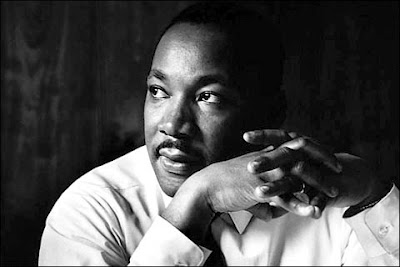NYT MANAGEMENT » RACE » U.S.
The Legacy of Arthur Ochs Sulzberger and the Civil Rights Movement
October 1, 2012 · 0 Comments

By Clarence B. Jones:
The recent death of Arthur Ochs Sulzberger, former publisher of the New York Times, provoked memories of the Times and its coverage of the Civil Rights Movement during the 1960s. Last week I participated in the continuing Centennial Celebration of the University of San Francisco's Law School. In my speech to law students and faculty, among other things, I paid tribute to the Times for its defense of the libel case filed against it by L.B. Sullivan, police commissioner of Montgomery, Alabama.
Dr. Martin Luther King, Jr. and the entire leadership of his organization, the Southern Christian Leadership Conference (SCLC), were also sued as co-defendants.
The publication of the so-called "secret" Pentagon Papers in 1971 during the presidency of Richard Nixon disclosing the foreign policy intelligence and rationale for the conduct of the Vietnam War is one of the singular events that defined the Times under Arthur Ochs Sulzberger. Less known, but also a defining moment of his legacy as publisher was the case of Sullivan vs. The New York Times.
Writing in the New York Times, September 29th, columnist Clyde Haberman wrote that "the paper he took over as publisher in 1963 was the paper it had been for decades: respected and influential, often setting the national agenda. But it was also in precarious financial condition and somewhat insular, having been a tightly held family operation since 1896."
Nevertheless, "It would have been hard to dispute that the Times was America's premier paper in 1963. Its influence on national politics was even greater than it is in today's information-saturated age of round-the-clock cable news, social media and the Internet."
On March 29th, 1960, The Committee to Defend Martin Luther King, Jr. ran a full page ad in the New York Times under the caption "Heed Their Rising Voices" The letterhead of the Committee had the names of Harry Belafonte, Marlon Brando, Nat King Cole, Ertha Kitt, Van Heflin, Sidney Poitier, Eleanor Roosevelt, Lorraine Hansberry, Langston Hughes, Hope Lange, Mahalia Jackson, Howard University's Mordecai Johnson, Shelly Winters, and others.
The ad was published as a paid for fund raising appeal to raise money needed to defend the tax case instituted by the State of Alabama against Martin Luther King, Jr. The ad described the actions of the police, in Birmingham, many of whom were on horseback, and the peaceful protest of civil rights demonstrators. The protest demonstration was part of the effort to desegregate lunch counters, department stores, and other public facilities in the city of Birmingham.
The text was not about Dr. King's tax case, but the sit-ins in the South and in Birmingham that were taking place at that time.
The Times' fact checker found that:
*where the ad had said that students from Alabama State had sung "The Star Spangle Banner on the capital steps, the students had in fact sung "My Country 'Tis of Thee'; and
*where the ad had said "police armed with shotguns and teargas and "ringed" the campus, the police had merely repulsed the students who were leaving it; and
*where the ad had said the Alabama State dining hall had been padlocked "to starve the students in to submission" no such padlock had been put on the doors.
The Times retracted the errors.
Lawyers for the City of Montgomery decided that the ad, and the Times for running the ad, had defamed Montgomery's public safety Commissioner, L. B. Sullivan.
The ad had the intended result. It spiked a significant flow of contributions to SCLC and to "The Committee to Defend Dr. King." Additionally, it was the subject of commentary by other media outlets including radio stations. L.B. Sullivan filed suit against the SCLC and the New York Times.
Dr. King and his co-defendants met Service of the suit on the leadership of SCLC and the Times with fear and anxiety. The initial reaction of the Times was to solicit and consider a statement of retraction in mitigation of the claim for damages. The Times, as a business organization, was potentially facing a major damage award.
Dr. King, Stanley Levison, also a lawyer and adviser to Dr. King and I stepped back from the legal implications of the suit. We began to appraise the political implications of the libel action. We regarded the suit as an effort to discredit the leadership of the direct action civil rights movement of Dr. King.
We regarded the libel suit against the Times and Dr. King was the most serious threat to the survival of the SCLC and to the Civil Rights movement led by Dr. King that had occurred up to that time. We also concluded that the political objective of the lawsuit was to bankrupt and decapitate SCLC and its leadership. The individual defendants had few assets to satisfy any potential libel judgment.
The mere process of defending the case in the courts would consume a great deal of time, attention and financial resources of Dr. King and his individual co-defendants.
Then-counsel for the New York Times, Lord, Day & Lord, requested an urgent meeting with Dr. King and the other defendants or their designated representatives Stanley Levison and I attended the first meeting with LD&L lawsuit on behalf of Dr. Martin King and the other defendants.
Under extensive questioning by lawyers for the New York Times, Stanley and I held firm that the events described in the fund raising appeal were accurate or substantially accurate about the acts of violence and brutality committed by the police in Birmingham and Montgomery against the demonstrators. Therefore, our position was that a retraction by the SCLC was out of the question. A retraction would be our admission that the events described in the ad were false and untrue.
Moreover, we had ample evidence from photos, both in the Times and other media and statements of witnesses who either took part in the demonstration or who observed the demonstration, to support our description of events recited in the ad.
Two weeks after the ad had run, Harrison Salisbury, the Times' Pulitzer Prize-winning reporter, on April 12th wrote a two part story, featured on the front page, under the headline "Fear and Hatred Grip Birmingham."
"Every channel of communication, every medium of mutual interest, every reasoned approach, every inch of middle ground has been fragmented by the emotional dynamite of racism, reinforced by the whip, the razor, the gun, the bomb torch, the club, the knife, the mob, the police and many branches of the states' apparatus."
It became clear to Martin, Stanley and me that mounting a vigorous defense would be burdensome and costly and beyond the resources and capability of SCLC. Under the circumstances it was concluded that my principal continuing responsibility would be to mobilize support in defense of the suit from the business and legal profession in the City of New York.
The first people I discussed the matter with were two neighbors of mine in Riverdale, New York, Anne and Theodore W. Kheel. As a result of that discussion Ted Keel and I jointly worked together to bring the seriousness of the case to the attention of several prominent New York lawyers. They served as an interim defense committee to assist Dr. King and the other individual defendants.
Ted Kheel had a professional relationship and friendship with former Secretary of State, William P. Rogers, of the law firm, Rogers & Wells. They agreed to take the case on a pro bono basis and rallied several other law firms to work with them as amicus curiae -- friend of the court. The defense of the case by Rogers & Wells, and Lord Day & Lord for the New York Times went all the way up to the United States Supreme Court.
Although the suit was filed against the Times, Dr. King and others in April 1960, almost three years before Arthur Ochs Sulzberger formally assumed his role and responsibility as "publisher," management and funding the defense of the case all the way to the US Supreme Court would occur on his watch.
In March 1964 the Court ruled in favor of the defendants in what has become the landmark decision in the law of libel and First Amendment rights, Sullivan vs. the New York Times. In the opinion by Justice William Brennan, the Court, among other things noted that:
"The publication here was not a 'commercial' advertisement ... It communicated information, expressed opinion, recited grievances, protested claimed abuses, and sought financial support on behalf of a movement whose existence and objectives are matters of the highest public interest and concern.That the Times was paid for publishing the advertisement is as immaterial in this connection as is the fact that newspapers and books are sold.
The present advertisement, as an expression of grievance and protest on one of the major public issues of our time, would seem clearly to qualify for the constitutional protection."
"That erroneous statement is inevitable in free debate, and that it must be protected if the freedoms of expression are to have the "breathing space" that they "need... to survive.
Whatever is added to the field of libel is taken from the field of free debate.
Injury to official reputation affords no more warrant for repressing speech that would otherwise be free than does factual error.
It often happens in important events and moments of history that those who were at the center of a struggle are not fully known or have the significance of their efforts recognized. Theodore W. Keel, Rogers & Wells, and the lawyers who came together in defense of Dr. King and the others, until this day were truly unsung heroes of the Civil Rights Movement. They prevented the political decapitation of Dr. King's leadership at one of the most important moments of time in our history. All of America owes them, and Arthur Ochs Sulzberger, a great debt.
Clarence B. Jones is Diversity Visiting Professor, University of San Francisco; and Scholar Writer in Residence, MLK, Jr. Institute, Stanford University.
By admin










Sorry, comments are closed on this post.